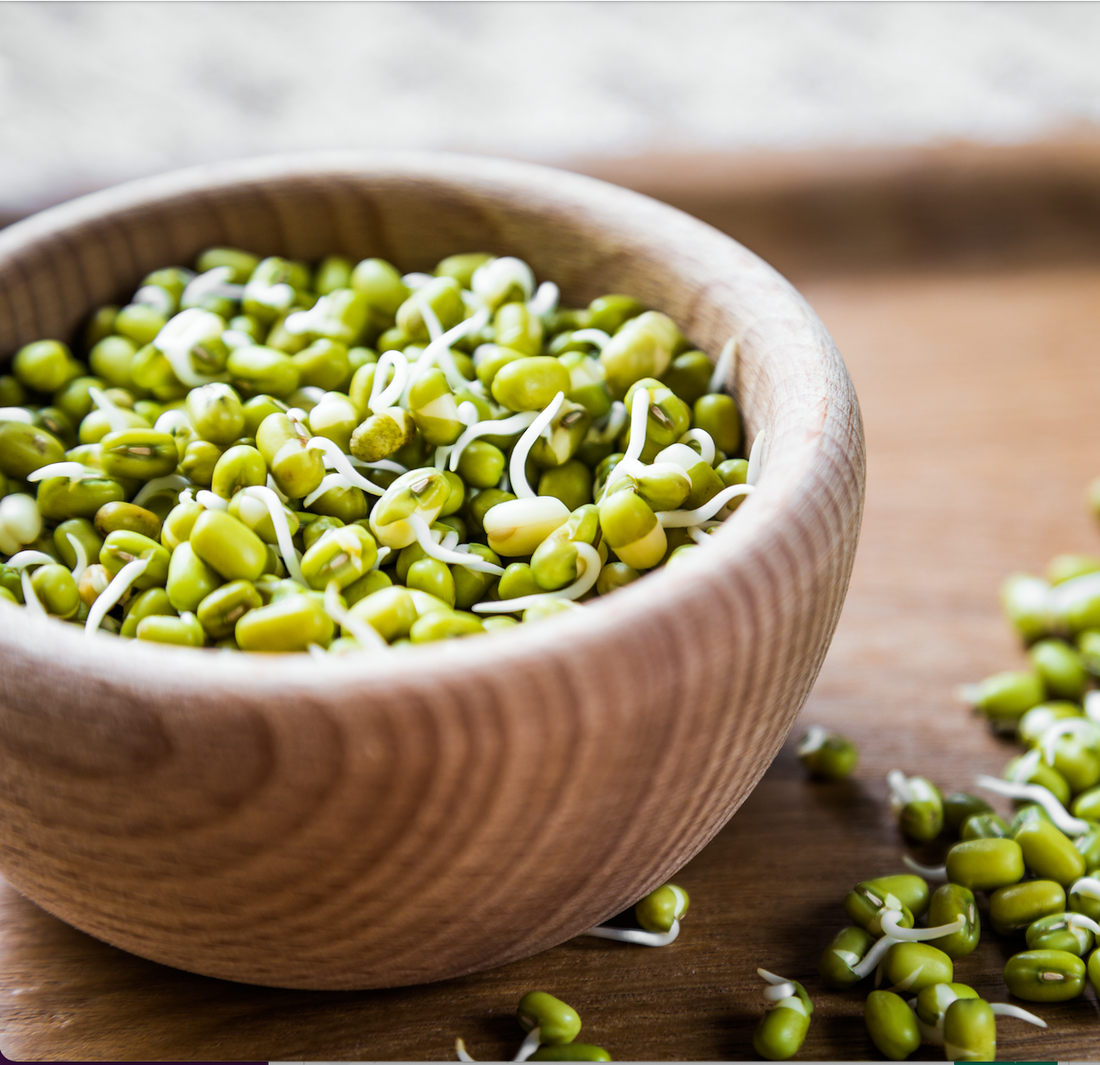By Rianne Chittenden
While Phytic Acid is an excellent survival mechanism for beans, protecting them from weather and insects, it is not so stellar for humans. It binds to minerals, inhibiting mineral absorption and making it really difficult for us to digest the proteins. The exciting news though are two solutions, soaking or sprouting, which can lead you to easier digestion. Each of these have their merits and level of execution. Learn below, then go ahead and hop on the train to easier to eat beans.
The Soak
The process of soaking does the job of removing the phytic acid and greatly increases the digestibility. There are many references out there listing how many hours each type needs but I honestly find it easier to prep the day before and soak overnight. A tiny bit more effort to know what I want in advance, but I’m not constantly having to reference a soaking chart. Soaking is minimal effort and great for every day eating and cooking.
Directions:
- Thoroughly rinse in colander
- Transfer to container and fill with filtered water
- Nuts and Seeds only need the water to be a tad over
- Most grains expand and having the water be double to triple the grain level is a safe bet
- Let soak overnight
- Rinse again in colander in morning, do not use soaking water (it contains the phytic acid!)
- Now grains and beans are ready to be cooked and nuts and seeds are ready to be eaten or dried for storage.
The Sprout
Sprouting is a bit more effort than soaking, but worth it. It’s also Spring and the season to sprout! It is a primary source of food for many animals as that is what is most available right now. With sprouting, many chemical reactions are occurring as the seed is beginning to burst more into life. Minerals start binding to proteins, making it easier for the body to digest. Fatty acid content increases. As sprouts also have a much higher nutrient content than their mature counterparts, it’s no surprise they are considered a ‘super’ food. While easy to find in stores, they are outrageously expensive. One at-home sprouting success and you’ll realize it is the way to go, and an excellent bang for the buck for the nutrient content you receive!
Directions:
- Thoroughly rinse in colander and transfer to glass container with screen or perforated top.
- Cover with double to triple the amount of water
- Soak overnight and the drain and rinse in the morning
- Then for 1-3 days set the jar on its side in a DARK place, rinsing and shaking the seeds at least once a day. Don’t let the seeds dry out.
- When they germinate and begin to sprout, place the jar in indirect sunlight and keep them moist
- When the sprouts are green on the tips they are ready to eat.
- Rinse them really well. Seeds and nuts are ready to eat while bean and grain sprouts need to cooked for atleast a few minutes.
- Refrigerated sprouts last up to about a week with daily rinsing
Reference: Dr. Mercola
The thought of sprouting was really intimidating to me at first. But once I managed to move past that block and started to experiment with it, I realized it is not that time consuming. Depending on how much I sprout, it can be my nutrition packed protein source for days! I just add them to my salads, soups or even avocado toast. My go to is sprouted whole mung beans as they have great flavor and I love the texture. Just sauté in ghee for 1-2 minutes and they are ready to eat! If I’m feeling lazy with adding flavor/spice, I let my ghee do the work for me and sauté in our Fancy Niter Kibbeh. For those who haven’t tried it yet, I highly recommend. The ghee is infused with a delicious blend of Ethiopian spices and herbs you won’t realize you’ve been missing until you taste it!
Happy Sprouting, Friends


